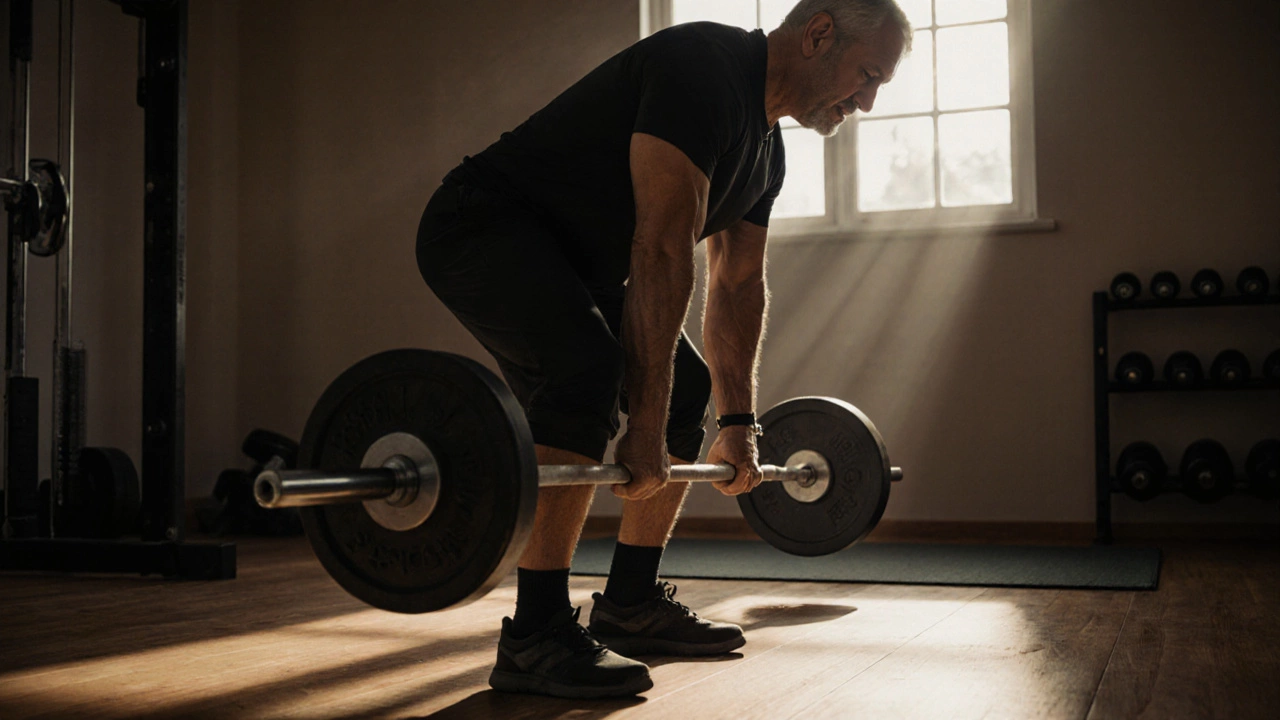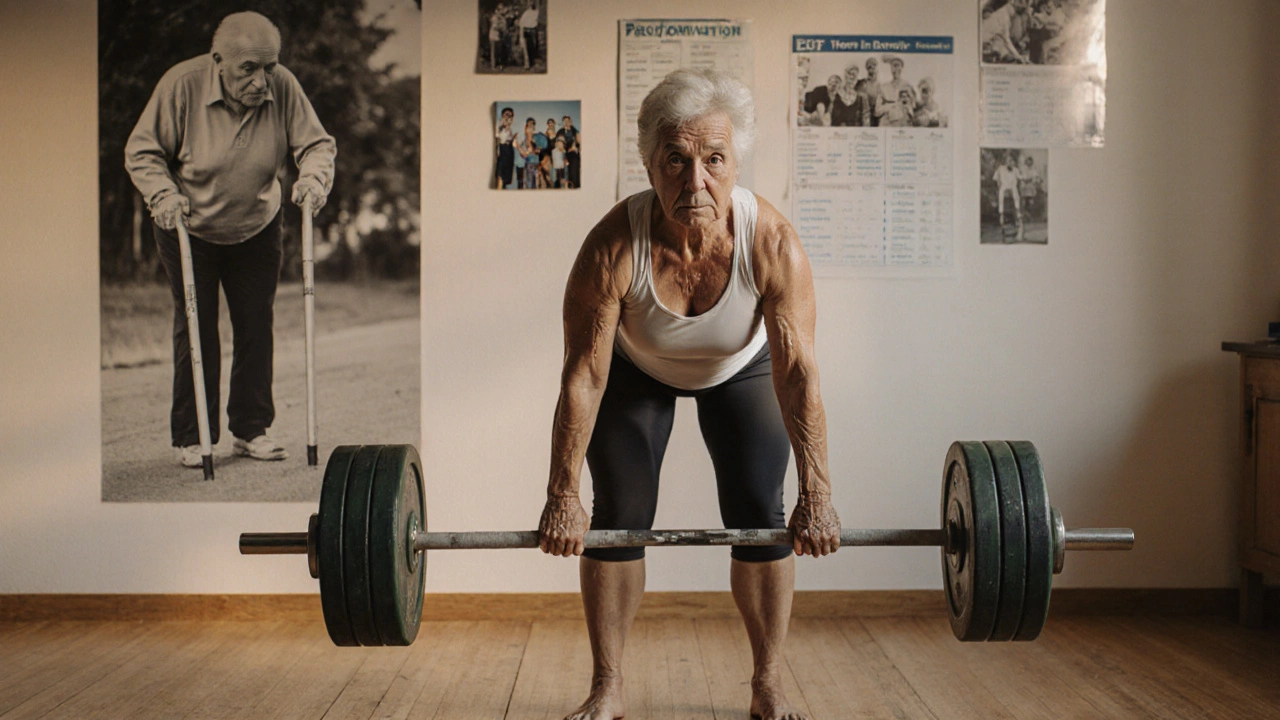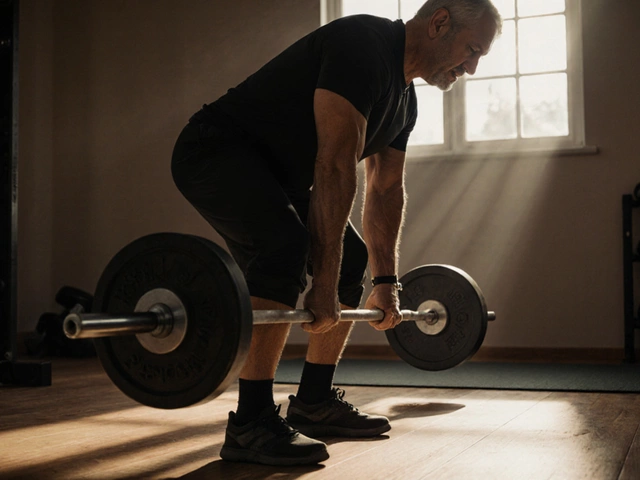What Is the Number 1 Workout? The One Exercise That Builds Strength, Endurance, and Function

Deadlift Weight Progression Calculator
Start Safe, Progress Smart
The article explains that deadlifting safely requires proper form and gradual progression. This calculator helps you determine the right starting weight and safe progression based on your experience level.
Your Deadlift Progression Plan
Start with your recommended starting weight and add 5-10% each week. Always prioritize form over weight.
There’s no secret gym ritual, no viral TikTok trend, and no expensive machine that beats the deadlift when it comes to real-world strength and body control. If you want the number 1 workout-the one that transforms how you move, carry, lift, and live-it’s the deadlift. Not the squat. Not the bench press. Not the pull-up. The deadlift. It’s the original human movement: picking something heavy off the ground. And it’s still the most effective way to build strength across your entire body.
Why the Deadlift Stands Alone
Think about what you do every day. You bend to pick up groceries. You lift a child out of a car seat. You haul a bag of dog food up the stairs. You stand up from a chair after sitting too long. Every single one of those actions mirrors the deadlift. It’s not about looking good in a mirror-it’s about being able to handle life without hurting yourself.
The deadlift works your glutes, hamstrings, lower back, traps, lats, forearms, and core-all at once. No other single exercise hits that many major muscle groups with that much force. A study from the Journal of Strength and Conditioning Research found that deadlifts activate the posterior chain more than any other compound lift, including squats. That’s the group of muscles running from your lower back down to your calves. When these muscles are strong, you stand taller, move faster, and feel less pain in your lower back.
People who deadlift regularly report fewer injuries, better posture, and more energy throughout the day. It’s not magic. It’s physics. When you pull a barbell off the floor, you’re training your body to generate force from the ground up. That’s the same pattern used in sprinting, jumping, and even throwing a ball.
How the Deadlift Compares to Other Popular Workouts
Let’s cut through the noise. You’ve heard that squats are king. Or that pull-ups build the best upper body. Or that kettlebell swings are the new holy grail. Here’s how the deadlift stacks up against the most common contenders:
| Exercise | Full Body Engagement | Functional Carryover | Strength Gains | Injury Risk (if done poorly) |
|---|---|---|---|---|
| Deadlift | High | Very High | Very High | Moderate |
| Squat | High | High | High | High |
| Bench Press | Low | Low | High (upper body only) | Moderate |
| Pull-Ups | Moderate | Moderate | Moderate | Low |
| Kettlebell Swing | Moderate | High | Moderate | High |
Deadlifts win on functional carryover because they mimic real-life lifting patterns. Squats are great for sitting and standing, but you don’t often squat to pick up a box from the floor-you bend and hinge. That’s the deadlift. Pull-ups are fantastic for upper body, but they don’t train your legs or hips. Kettlebell swings are explosive and fun, but they don’t build the same level of maximal strength.
The deadlift doesn’t just make you stronger. It makes you more resilient. A 2023 study tracking 1,200 gym-goers over two years found that those who included deadlifts in their routine had 42% fewer lower back injuries than those who didn’t-even if they did other back exercises.
How to Do the Deadlift Right (No Guesswork)
Bad form turns the deadlift into a back injury waiting to happen. Good form turns it into your most powerful tool. Here’s how to do it, step by step:
- Stand with your feet hip-width apart, the barbell over the middle of your feet.
- Push your hips back and bend your knees just enough to grip the bar. Your shins should touch the bar.
- Grab the bar with both hands-overhand or mixed grip. Your arms should hang straight down.
- Take a deep breath and brace your core like you’re about to get punched in the stomach.
- Keep your chest up and your back flat. Look at a spot on the floor about six feet ahead.
- Drive through your heels, extend your hips, and stand up with the bar close to your body.
- At the top, squeeze your glutes. Don’t lean back.
- Lower the bar by pushing your hips back first, then bending your knees. Keep the bar close.
That’s it. No fluff. No bouncing. No rounding your back. If you can’t keep your spine neutral, you’re lifting too heavy. Start light. Master the pattern. Then add weight slowly.
Beginners should start with 4 sets of 5 reps, twice a week. Use a weight that lets you complete all reps with perfect form. If your form breaks on the last rep, you went too heavy. This isn’t a contest. It’s a skill.

Who Should Avoid the Deadlift?
Almost everyone can do the deadlift safely-with proper coaching. But there are exceptions. If you have:
- A recent herniated disc (wait at least 6 months and get cleared by a physio)
- Severe osteoporosis with spinal fractures
- Uncontrolled high blood pressure
Then you need to skip the barbell version. But you don’t have to skip strength training. Romanian deadlifts with dumbbells, trap bar deadlifts, or even farmer’s carries can give you 80% of the benefits with less spinal load.
Many people think they can’t deadlift because they’re “too stiff” or “too weak.” That’s exactly why they should. Deadlifts fix stiffness. They build strength. The goal isn’t to lift like a powerlifter. It’s to move like someone who can handle life without pain.
What Happens When You Deadlift Consistently
After 8 weeks of doing deadlifts twice a week, most people see:
- 20-40% increase in total body strength
- Improved posture (shoulders back, chest open)
- Reduced lower back discomfort
- Better performance in other lifts
- More confidence lifting everyday objects
I’ve seen it in my own gym in Calgary. A 62-year-old woman started deadlifting 60 pounds after years of avoiding heavy lifting. Six months later, she was lifting 140 pounds. She stopped needing a cane to walk up stairs. She could carry her own groceries without stopping. That’s the power of this one exercise.
It’s not about how much you lift. It’s about how much better your life becomes because you lifted it.

What to Do After You Master the Deadlift
Once you’re comfortable with the standard deadlift, you can level up:
- Try trap bar deadlifts-easier on the lower back, great for beginners and older adults
- Add pause deadlifts-hold the bar 2 inches off the floor for 3 seconds to build control
- Move to single-leg Romanian deadlifts to fix muscle imbalances
- Combine deadlifts with farmer’s carries for grip and core endurance
But don’t overcomplicate it. The deadlift doesn’t need upgrades. It needs consistency.
Final Thought: The Deadlift Is the Foundation
There’s no workout that does more with less. No exercise that translates so directly to real life. The deadlift isn’t flashy. It doesn’t have a hashtag. It doesn’t show up in Instagram ads. But it’s the one thing that separates people who stay strong as they age from those who break down.
If you only do one workout for the rest of your life, make it the deadlift. Not because it’s trendy. Not because someone told you to. But because it works-when nothing else does.
Is the deadlift really the number 1 workout for everyone?
Yes, for most people. It’s the most functional, full-body movement that builds strength, posture, and injury resilience. But if you have specific injuries or mobility limits, alternatives like trap bar deadlifts or farmer’s carries can be just as effective.
How often should I deadlift?
Twice a week is ideal for strength gains. Once a week is enough for maintenance. Don’t deadlift every day-your body needs time to recover. Focus on quality over frequency.
Can I deadlift if I have lower back pain?
If your pain is mild and chronic, deadlifting with perfect form can actually help. But if it’s sharp, recent, or radiating, see a physical therapist first. Start with light weights and focus on hip hinge mechanics-not lifting heavy.
Do I need special shoes for deadlifting?
Not necessarily. Flat-soled shoes like Converse or barefoot work best. Avoid cushioned running shoes-they make it harder to feel the floor and transfer force. If you’re lifting heavy, consider deadlift-specific shoes with a slight heel lift.
Why do some people say squats are better?
Squats are great for leg strength and knee health. But they don’t train the posterior chain as fully as deadlifts. The deadlift also builds grip strength, core stability, and hip extension-all critical for daily movement. If you had to pick one, deadlift wins for overall function.

